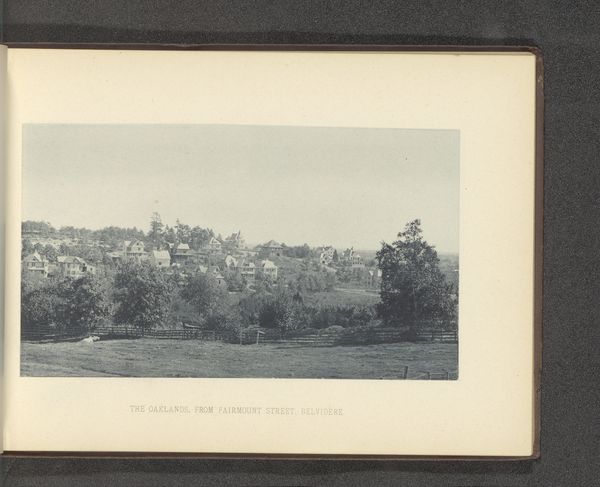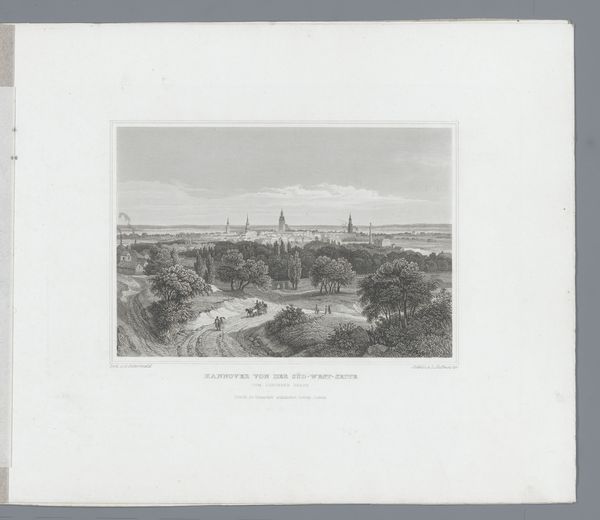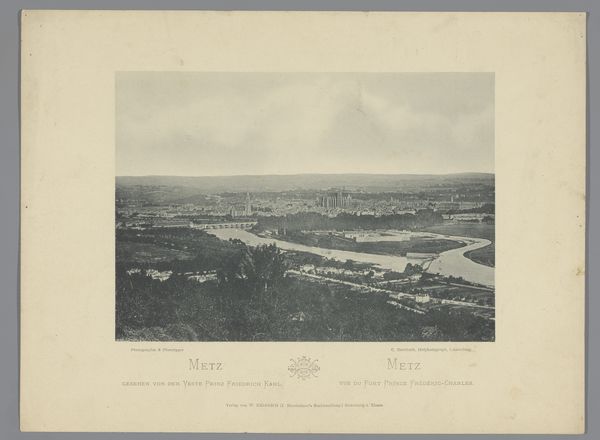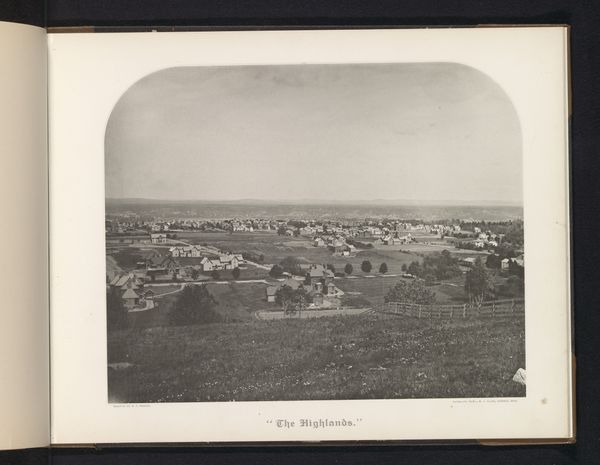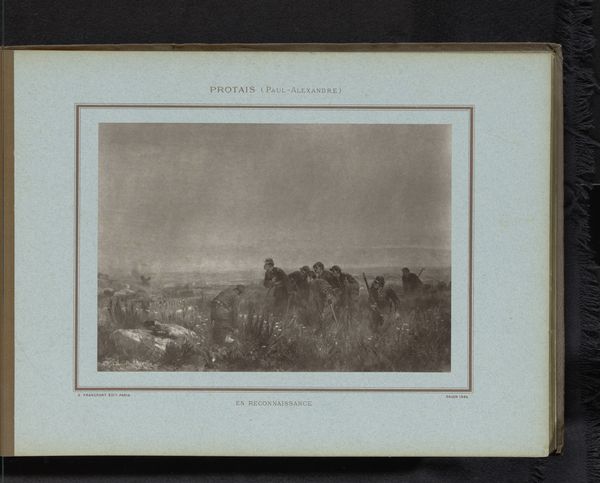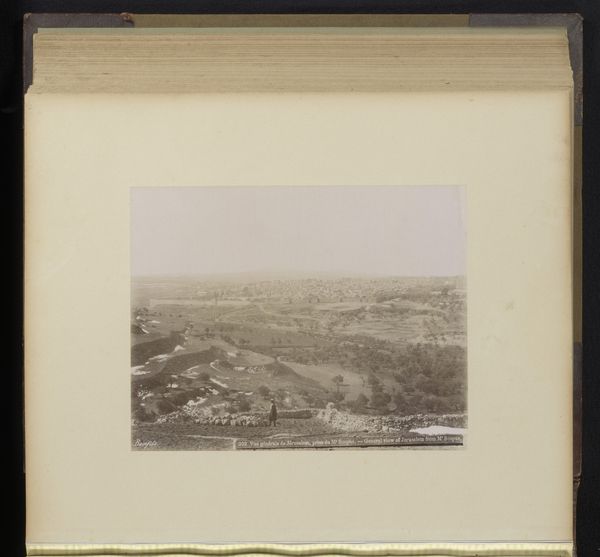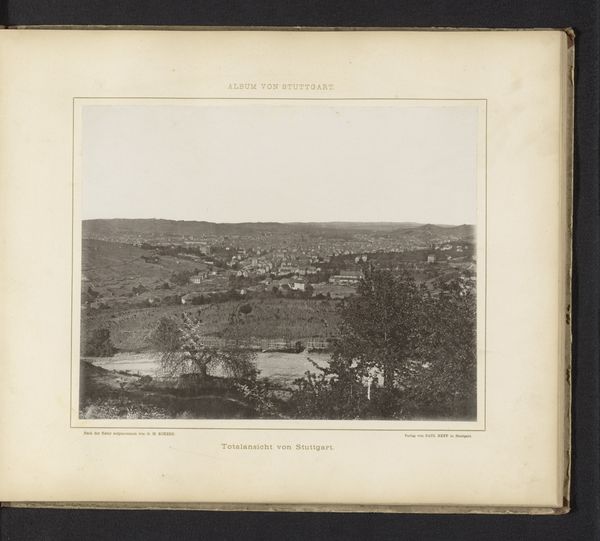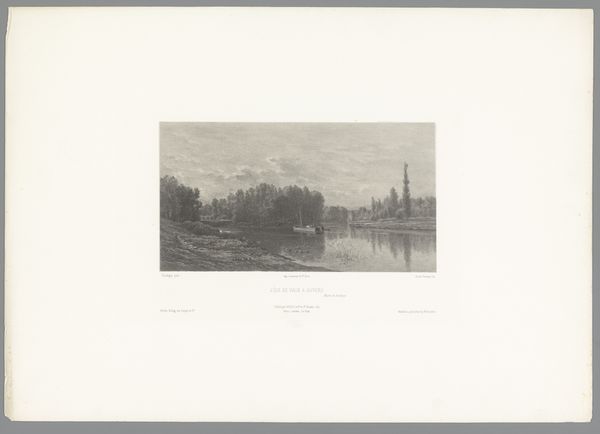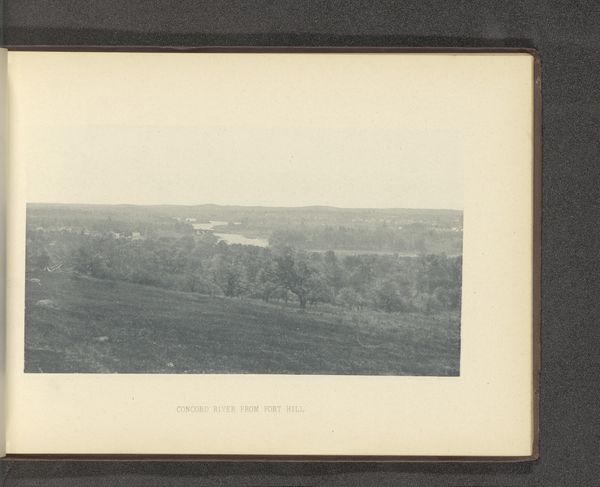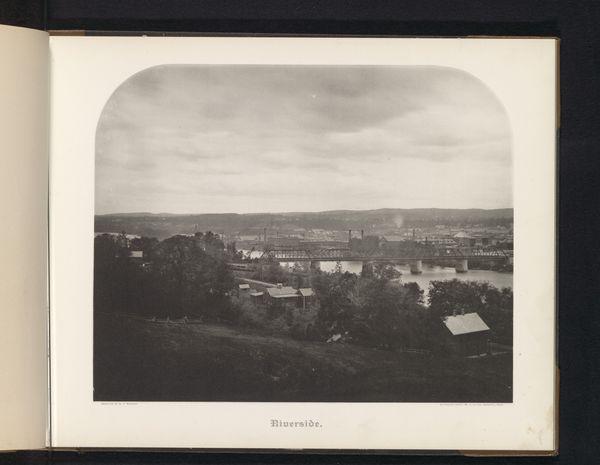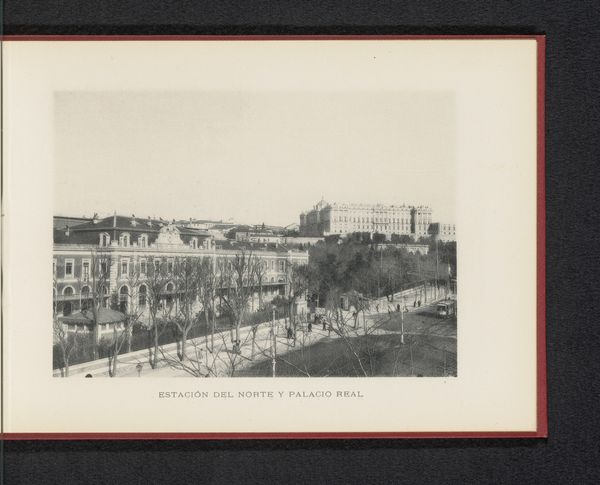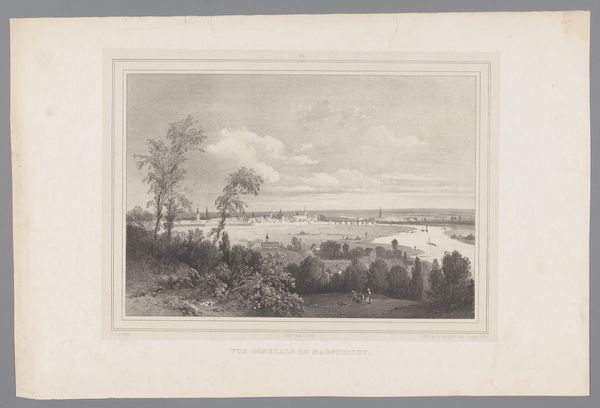
photography, gelatin-silver-print
#
photography
#
gelatin-silver-print
#
cityscape
#
realism
Dimensions: height 115 mm, width 162 mm
Copyright: Rijks Museum: Open Domain
Curator: Welcome! We're standing before "Gezicht op Madrid," a photograph created by Hauser y Menet, circa 1888 to 1898. This gelatin silver print offers us a wide view of the city. Editor: My first impression is one of somber observation. The tones are muted, almost monochromatic. There is a stark, somewhat bleak atmosphere, despite the seemingly objective depiction of the cityscape. Curator: Precisely. The realism apparent here reflects a documentary impulse, common in photography of that era. It portrays Madrid's urban landscape in the late 19th century, capturing its architectural forms, and suggesting a moment of transition. Note the industrial presence and also the framing that draws the viewer into the cityscape. Editor: It's interesting you point out the transitional moment. The haze suggests the presence of industrial activity and expansion and I see that transition echoed in the foreground, with bare trees, positioned near a flowing river, but divided by the horizon and urban structure, raising questions about humanity’s relationship to its environment. What do you think this work contributes to Madrid's image in this period? Curator: Well, the photograph presents a specific image of modernity. We see industrial advances but the choice of such an extended view and the muted tonality invites contemplation of urban life in all its complexity and raises awareness of social disparities evident through the architectural variation captured here. It invites public discourse. Editor: I agree; however, considering this through the lens of power structures, whose vision of Madrid is centered here? This is the question the photograph raises for me. I see a need to critically examine its visual rhetoric and question the power dynamics implicit in its representation of space and society at that time. It also brings into consideration how visual representation has been and still is used as a tool to define, reinforce, or resist identities, spaces, and cultures. Curator: That’s a great point. By interrogating historical context, it's imperative to ask how photographic images contribute to, or challenge, prevailing power structures in society, and the history of Madrid’s perception over time. Editor: Precisely. I feel that we, by reflecting on these important questions, enrich our viewing of this piece.
Comments
No comments
Be the first to comment and join the conversation on the ultimate creative platform.
